A Flight into The Darkness of the Lunar Umbral Shadow
3 Minutes of Totality
From the Pristine, Clear, and Particulate Free Skies
of the High Polar (81°) North from 35,000+ feet
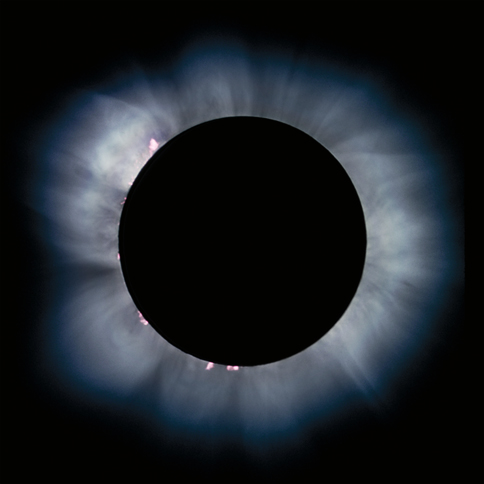
Launched from Cologne(Köln)/Dusseldorf, Germany
with "Flightseeing" of the North Pole and Svalbard
| LTU Airlines | Deutsche Polarflug | Sky & Telescope | TravelQuest International |
| "EFLIGHT"
Technical Planning: Dr.
Glenn Schneider, Steward Observatory, University of Arizona |
|||
TSE2008 AND
AN OPPORTUNITY FOR AIRBORNE OBSERVATIONS
The next total solar eclipse
visible
from the Earth will occur on 01 August 2008. The path of
totality, the region on the Earth's surface where the Sun will be
totally obscured by the Moon, begins in northern Canada. There,
interrupting the otherwise leisurely brightening of the polar sky at
local sunrise at 09:21 UT, darkness will rapidly descend as the lunar
umbral shadow touches down on the surface of the Earth. The
Moon's shadow then quickly whisks northeastward over the Canadian
Arctic, the north
coast of Greenland and the Arctic
Ocean. Due north of Iceland, the centerline of the totality path
approaches within 7
degrees of latitude of the North Pole. With the shadow decelerating,
path of totality then turns southward,
passing between Svalbard (Norway) and
Novaya Zemlya (Russia). After traversing across northern Russia,
accelerating again after local noon
and cutting a swath through Siberia, the total eclipse
will end in central China as the Moon's shadow
lifts back into space at local sunset at 11:21 UT. For a span
three hours the trek of the lunar shadow will plunge isolated regions
of the Earth into darkness, but for no more then 2m 27s from any
location (on the ground). This, the total solar eclipse of
01 August 2008 (TSE2008), is now very much on the minds of eclipse
"chasers" world-wide as expeditionary plans for observing this fleeting
phenomenon are being forged.
Eclipse chasers are currently weighing the currently available options (and risks) of ground-based expeditions to conduct observations in northern Canada, Greenland, Siberia, or north-western/central China. The prospects for clear skies over northern Canada/Greenland are bleak and accessibility to the path, while (in some places) possible, is difficult but the altitude of the Sun is low where an infrastructure exists to enable travel to/from potential eclipse sites. Path accessibility and cloud cover expectations are similarly daunting over northern Russia and most of Siberia. This situation is similar to that of 23 November 2003 total solar eclipse (TSE2003) - which was visible only from the Antarctic, but was successfully observed by two well-planned flights over the inland regions of the "White Continent" using Boeing 747-400ER (Qantas) and Airbus A340 (Lan Chile) aircraft. A similar airborne option for TSE2008 has sought by the "eclipse chasing" community of professional and amateur astronomers, and a viable and appealing flight opportunity has now been arranged.
Unlike TSE2003, other less logistically challenging observation options for TSE2008 exist, but with mixed elements of risk for expectation of cloud cover, and difficulty for access in the regions which have the highest statistical probabilities for clear skies. In particular, south eastward of the (high cloud-cover probability) "local noon" point on centerline, the path of totality crosses over Novosibirsk - a readily accessible major city in Siberia - and a likely destination for many more casual eclipse chasers due to its ease of access and convenience it affords. The likelihood of seeing the eclipse from Novosibirsk and its environs, however, is only about 50% based upon prevailing cloud conditions at that time of year. The cloud cover situation improves as the path moves into China, considerably better where the altitude of the Sun is (unfortunately) declining toward sunset. Accessibility to centerline in the "best" regions in China (near Mongolia) is more difficult and mobility (in reaction to unfavorable weather conditions) along the path of totality is questionable, and higher-airmass along the line-of-site near sunset much less appealing.
At this altitude and latitude, aerosol scattering of sunlight by airborne particulates is extremely low, giving rise to an exceptionally dark sky during totality, enabling eclipse viewing with significantly enhanced image contrasts. Moreover, the the airmass along he line-of-sight to the Sun is significantly reduced (by ~ 75%), resulting in exceptional sky transparency, greatly reduced atmospheric turbidity, and better astronomical "seeing".
THE "CLOSE" VIEW FROM ON HIGH
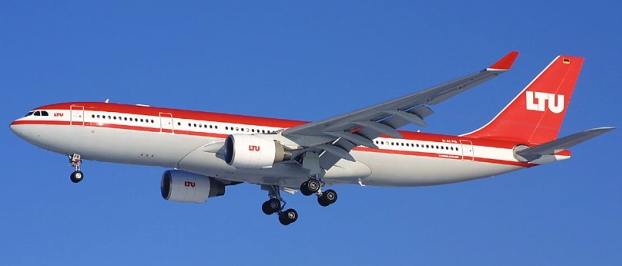
The TSE2008 eclipse flight will have a duration of approximately
12 hours, inclusive of the "flightseeing" segments over the North Pole
and Svalbard. Below the formulation and details of a "baseline"
flight plan, with a provisional timeline is provided, but in detail
is
subject to revision based upon actual flight conditions. We
remain
flexible to in-flight adaptation, as required, to assure an optimal
eclipse intercept. The detailed
pre-planning of the observation-optimized eclipse flight, and the
ability to
respond to changing in-flight conditions in situ, have been made possible
by
the development, and well-tested use, of a special software package,
EFLIGHT,
designed for specifically that purpose. EFLIGHT, and
its core
astrodynamical and navigational algorithms, have been used to plan six
and execute four solar eclipse flights (most recently executed for the
Antarctic eclipse flights previously mentioned -- see HERE
for more details). Eclipse chasers are currently weighing the currently available options (and risks) of ground-based expeditions to conduct observations in northern Canada, Greenland, Siberia, or north-western/central China. The prospects for clear skies over northern Canada/Greenland are bleak and accessibility to the path, while (in some places) possible, is difficult but the altitude of the Sun is low where an infrastructure exists to enable travel to/from potential eclipse sites. Path accessibility and cloud cover expectations are similarly daunting over northern Russia and most of Siberia. This situation is similar to that of 23 November 2003 total solar eclipse (TSE2003) - which was visible only from the Antarctic, but was successfully observed by two well-planned flights over the inland regions of the "White Continent" using Boeing 747-400ER (Qantas) and Airbus A340 (Lan Chile) aircraft. A similar airborne option for TSE2008 has sought by the "eclipse chasing" community of professional and amateur astronomers, and a viable and appealing flight opportunity has now been arranged.
Unlike TSE2003, other less logistically challenging observation options for TSE2008 exist, but with mixed elements of risk for expectation of cloud cover, and difficulty for access in the regions which have the highest statistical probabilities for clear skies. In particular, south eastward of the (high cloud-cover probability) "local noon" point on centerline, the path of totality crosses over Novosibirsk - a readily accessible major city in Siberia - and a likely destination for many more casual eclipse chasers due to its ease of access and convenience it affords. The likelihood of seeing the eclipse from Novosibirsk and its environs, however, is only about 50% based upon prevailing cloud conditions at that time of year. The cloud cover situation improves as the path moves into China, considerably better where the altitude of the Sun is (unfortunately) declining toward sunset. Accessibility to centerline in the "best" regions in China (near Mongolia) is more difficult and mobility (in reaction to unfavorable weather conditions) along the path of totality is questionable, and higher-airmass along the line-of-site near sunset much less appealing.
INTERESTED?
-- Contact: GLENN SCHNEIDER
at gschneider@mac.com
[if you are interested, or even think you may be, please don't hesitate to email!]
[if you are interested, or even think you may be, please don't hesitate to email!]
THE "WEATHER"
(acuna matata)
At high polar latitudes, such as at our 81° N point of
mid-eclipse intercept, the tropopausal boundary between the troposphere
below (where "weather occurs") and the
stratosphere has typical heights of only 6—9 km (compared to 12—17 km
at mid
and low latitudes). Polar stratospheric (nacrecous) clouds are extremely rare and only form at
very
low temperatures (< -78° C) during the polar winter, making the
probability of cloud-free eclipse viewing nearly 100% at our flight
altitude of 35,000 ft (~10.7 km) and "baseline" observing
location. Of course, we have the luxury (and flexibility) for in
situ retargeting of our viewing location if that is required for any
reason, however unlikely. At this altitude and latitude, aerosol scattering of sunlight by airborne particulates is extremely low, giving rise to an exceptionally dark sky during totality, enabling eclipse viewing with significantly enhanced image contrasts. Moreover, the the airmass along he line-of-sight to the Sun is significantly reduced (by ~ 75%), resulting in exceptional sky transparency, greatly reduced atmospheric turbidity, and better astronomical "seeing".
THE "BIG" VIEW
FROM ON HIGH
IN THE MOON'S SHADOW AT 35.000
FEET
 |
The
view of a total solar eclipse, and the
sweep of the Moon's umbral shadow as it races across (and above) the
Earth as seen from such a lofty height, is magnificent. As seen from 35,000 feet above the surface of the Earth the apparent horizon is 367 km (228 miles) away and depressed by 3.3° compared to sea level. As shown in the accompanying photographs (top by C. Roberts ~ 1 minute before and after totality, bottom by J. Pasachoff at mid-eclipse) taken from the 23 November 2003 eclipse flight at 35,000 feet at a latitude of 70° S: - The high reflectivity of the polar ice below accentuates the stark contrast between the eclipse-darkened regions within umbral shadow, and those illuminated by the Sun beyond the shadow's periphery. - Looking along the apex of the lunar umbral cone, toward the eclipsed Sun at mid-totality, the curvature of the distant umbral shadow boundary (i.e., the "shadow ellipse") is readily apparent. The 01 August 2008 Arctic/polar eclipse flight provides an unparalleled opportunity to observe the upcoming eclipse under the very favorable, and remarkably similar, conditions as prevailed for the 23 November 2003 Antarctic eclipse flight. For TSE2008 the Sun will be at a somewhat higher altitude, 26° above the horizon vs. 15° (as in these photographs), and the eclise will be viewed closer to the Earth's rotational pole than any total solar eclipse in history. |
THE "CLOSE" VIEW FROM ON HIGH
This, likely, is the most frequently asked question from those with ground-based eclipse observing experience. The answer (in an aircraft with suitable windows) is unequivocally YES. This was recently demonstrated with spectacular results from images taken by D. Finlay (an eclipse-viewing passenger on the 01 August 2003 QF2901 Antarctic eclipse flight) through one of the main cabin windows as processed by M. Druckmuller (see image to right). The 22x32 cm cabin windows of the Airbus A330-200 aircraft have been inspected and are of good optical quality and equally well suited for eclipse observations. Our aircraft provider (LTU) is well aware of the cleanliness requirements for the windows on the TSE2008 flight, and will deliver the aircraft for preparation to our detailed specifications the day before the eclipse. The placement and cadence of the windows with respect to each the two-seat sun-side seat rows has been checked for accessibility from the adjacent seats (the few seat rows without suitable window access will not be offered). Individuals can assess (from inspection photographs which are available) whether share or exclusive window access suits their needs. |
"Can I really observe coronal detail through an airplane window?"  |
WHY ARE WE
FLIGHTSEEING IN ADDITION TO SEEING THE ECLIPSE?
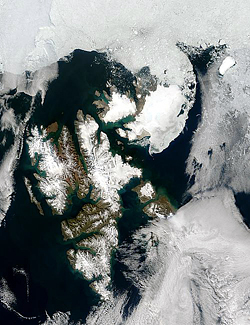 SVALBARD |
The
likelihood of a delayed take-off from Köln at 4AM in
the
morning is exceedingly small. None-the-less, the eclipse intercept has
not been planned with a time-critical take-off. The
inclusion of "extra" time aloft, before the time-critical intercept
with the Moon's shadow, is a necessary
and prudent contingency to safeguard against the unlikely event of a
take-off delay. In doing so we make the most
effective use
of requisite contingency scheduling "dead time" by augmenting the
flight plan with spectacular value-added sightseeing opportunies over
these geographically fascinating terrains.
These "flightseeing" segments are not specifically tied to the eclipse observations. The flight plan is baseline with pre-eclipse low-altitude flightseeing segments over Longyearbyen/Svalbard and the geographic North Pole. This baseline flight segment ordering allows us to the approximately 2.5 hr pre-planned flightseeing time as a buffer against a "late" take-off and still achieve an optimized mid-eclipse intercept. One, or both, of the flightseeing segments can be be executed following the totality, if that contingency should prove necessary. |
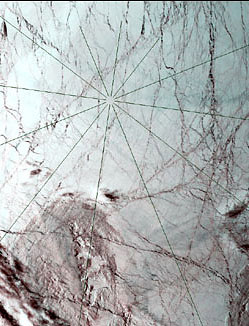 NORTH POLE |
IN FLIGHT
ADAPTABILITY FOR SUCCESS

WHERE WILL WE
VIEW TOTALITY?
The pre-selected point of mid-eclipse intercept for the "totality run" was arrived at based upon a number of competing criteria.
1.
Totality Duration. For clarity
of discussion, it is the TOTAL phase of the solar eclipse (i.e.,
"totality"), when the Moon completely covers the Sun, which is of
paramount interest - and importance. Totality is fleetingly
short. On the ground, the maximum duration of TSE2008 will be 2m
27s. This longest possible duration would be experienced by an
observer centrally located within the
Moon's shadow (i.e., on "centerline") where the projection of the
shadow on the rotating Earth is moving (relatively) most slowly
(in northern Russia). Elsewhere along and across the path of
totality, the duration of the total phase of the eclipse is
diminished. Every second of totality is precious to eclipse
chasers, and a high-priority goal is to maximize the achievable
duration of totality. From the ground, that goal is weighed against the
risks imposed by weather, and logistical constraints. If weather and
accessibility were not issues, ground-based eclipse observers would all
cluster at the one point in the path where totality was longest.
From the air (with sufficient aircraft endurance), and as clouds
are almost assuredly not an issue, this too would be the dominant
factor in selecting the point of "mid-eclipse intercept" (the place at
which the aircraft will be centrally located within the Moon's umbral
shadow at mid-totality). Maximizing the achievable duration of
totality remains a goal against which other factors are weighed, but
additional constraints must be considered.
2. Solar Elevation Constraint. In selecting the geographic (topocentric) location for an airborne "mid-eclipse intercept", the altitude of the Sun (above the horizon) cannot be so high as to make window-viewing impractical. Unfortunately, longer achievable durations of totality are (typically) correlated with higher Solar elevations. This is a trade which must be made, and solar elevations of 30 degrees or more must be excluded. Conversely, the Sun must be sufficiently above the horizon to (a) maximize the sky clarity, (b) circumvent obscuration by aircraft wing dihedral, (c) reduce the probability of a (distant) obscuring cloud along the line-of-site, (d) provide a darker sky background and better viewing contrast during totality. At a minimum the Sun should be at least 7 degrees above the horizon, but we establish 10 degrees as a working minimum.
3. Aircraft Heading Constraint. The azimuth angle of the Sun, as seen from the chosen point of mid-eclipse intercept, constrains the heading of the aircraft. For optimal viewing of the eclipse out the windows, the heading of the aircraft should be orthogonal to the Solar azimuth at mid-eclipse. I.e., the Sun should be (close to) "straight out" the Sun-side passenger cabin windows. Such aircraft orientations, unfortunately, are not in the direction of motion of the Moon's shadow for nearly all locations along the path of totality. From the air, the achievable duration of totality (for a given mid-eclipse intercept location) is modified by the aircraft's velocity vector and would be maximized by flying, instantaneously, in the direction of the velocity vector of the lunar shadow. For points of mid-eclipse intercept under consideration, a fully duration-optimized heading would displace the azimuthal viewing angle to the Sun significantly, and make window viewing difficult, if not impossible. Within the region of the path of totality constrained by the 10 to 30 degree solar elevation constraint, the aircraft must fly a heading which "crosses" the centerline of totality at mid-eclipse, to maintain solar visibility from the cabin windows. Flying at the necessary specific heading with the Sun out the starboard side windows would still yield a net increase in the duration of totality compared to a groundbased observer, as a component of the aircraft velocity vector would be in the direction of the Moon's.
4. Achievable Totality Duration. Figure 1 shows the duration of totality seen by a ground based observer on centerline along the path of totality with mid-eclipse times of 9h25m to 9h50m U.T. (red) compared to the duration of totality seen from an aircraft flying at ground speed of 470 NM/h at 35,000 ft, with the heading of the aircraft is equal to the solar azimuth minus 90 degrees. Note that an airborne mid-eclipse intercept, executed in this manner, at times 09:30 UT and later will result in a longer totality than can be achieved anywhere on the ground. The corresponding solar elevation, in degrees above the astronomical horizon, is show in Figure 2.
5. Aircraft Altitude. The location (and centerline) of the path of totality changes with aircraft altitude, and is significantly shifted from the sea-level projection of the Moon's shadow on the surface of the Earth. The high (10-12 km) flight altitudes achievable by our Airbus A330-200 assure uncompromisingly spectacular atmospheric conditions for viewing the eclipse. The nominal service ceiling of our Airbus A330-200 aircraft is 40,000 ft. We anticipate the possibility of slightly a lower altitude given the the air density/temperature conditions at the high polar latitude of the nominal mid-eclipse intercept. Our baseline plan is to observe the eclipse from an altitude of (at least) 35,000 ft. Flight conditions permitting we will observe the eclipse from the highest elevation achievable by the aircraft.
6. Air Space Restrictions.
Operations in and near the air space of the Franz Joseph Land region of
the Russian Federation is restricted. The baseline flight plan
precludes intrusion into restricted airspace.
Note: As a matter
of practicality, the
eclipse must be viewed (photographed and recorded) from the passenger
cabin windows - which constrains the selection of a point of
mid-eclipse intercept.
2. Solar Elevation Constraint. In selecting the geographic (topocentric) location for an airborne "mid-eclipse intercept", the altitude of the Sun (above the horizon) cannot be so high as to make window-viewing impractical. Unfortunately, longer achievable durations of totality are (typically) correlated with higher Solar elevations. This is a trade which must be made, and solar elevations of 30 degrees or more must be excluded. Conversely, the Sun must be sufficiently above the horizon to (a) maximize the sky clarity, (b) circumvent obscuration by aircraft wing dihedral, (c) reduce the probability of a (distant) obscuring cloud along the line-of-site, (d) provide a darker sky background and better viewing contrast during totality. At a minimum the Sun should be at least 7 degrees above the horizon, but we establish 10 degrees as a working minimum.
3. Aircraft Heading Constraint. The azimuth angle of the Sun, as seen from the chosen point of mid-eclipse intercept, constrains the heading of the aircraft. For optimal viewing of the eclipse out the windows, the heading of the aircraft should be orthogonal to the Solar azimuth at mid-eclipse. I.e., the Sun should be (close to) "straight out" the Sun-side passenger cabin windows. Such aircraft orientations, unfortunately, are not in the direction of motion of the Moon's shadow for nearly all locations along the path of totality. From the air, the achievable duration of totality (for a given mid-eclipse intercept location) is modified by the aircraft's velocity vector and would be maximized by flying, instantaneously, in the direction of the velocity vector of the lunar shadow. For points of mid-eclipse intercept under consideration, a fully duration-optimized heading would displace the azimuthal viewing angle to the Sun significantly, and make window viewing difficult, if not impossible. Within the region of the path of totality constrained by the 10 to 30 degree solar elevation constraint, the aircraft must fly a heading which "crosses" the centerline of totality at mid-eclipse, to maintain solar visibility from the cabin windows. Flying at the necessary specific heading with the Sun out the starboard side windows would still yield a net increase in the duration of totality compared to a groundbased observer, as a component of the aircraft velocity vector would be in the direction of the Moon's.
4. Achievable Totality Duration. Figure 1 shows the duration of totality seen by a ground based observer on centerline along the path of totality with mid-eclipse times of 9h25m to 9h50m U.T. (red) compared to the duration of totality seen from an aircraft flying at ground speed of 470 NM/h at 35,000 ft, with the heading of the aircraft is equal to the solar azimuth minus 90 degrees. Note that an airborne mid-eclipse intercept, executed in this manner, at times 09:30 UT and later will result in a longer totality than can be achieved anywhere on the ground. The corresponding solar elevation, in degrees above the astronomical horizon, is show in Figure 2.
5. Aircraft Altitude. The location (and centerline) of the path of totality changes with aircraft altitude, and is significantly shifted from the sea-level projection of the Moon's shadow on the surface of the Earth. The high (10-12 km) flight altitudes achievable by our Airbus A330-200 assure uncompromisingly spectacular atmospheric conditions for viewing the eclipse. The nominal service ceiling of our Airbus A330-200 aircraft is 40,000 ft. We anticipate the possibility of slightly a lower altitude given the the air density/temperature conditions at the high polar latitude of the nominal mid-eclipse intercept. Our baseline plan is to observe the eclipse from an altitude of (at least) 35,000 ft. Flight conditions permitting we will observe the eclipse from the highest elevation achievable by the aircraft.
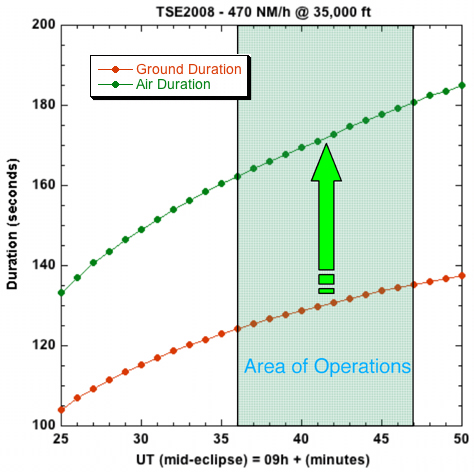 Figure 1. Ground and Air Durations of Totality |
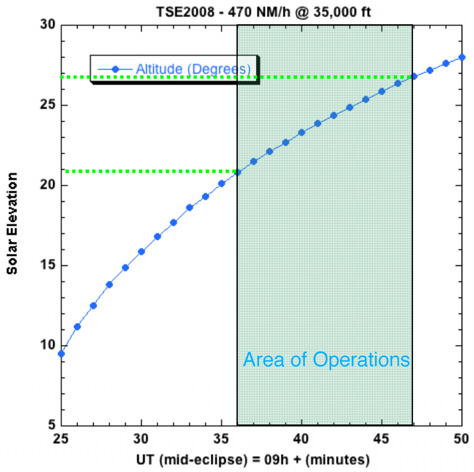 Figure 2. Solar Elevation at Mid-Eclipse Figure 2. Solar Elevation at Mid-Eclipse |
THE "TOTALITY
RUN" - DESCRIPTION
The TSE2008 flight's point of
mid-eclipse
intercept is optimize by observing the
the eclipse as far east along the path of totality as possible up to
the point of "maximum eclipse", but constrained by the criteria
previously discussed.
The TSE2008 flight is characterized by a number of "legs". Principal of these is the Totality Run, which is described here.
Prior to the lunar umbra shadow overtaking the aircraft, the aircraft will be:
(i) positioned and placed on a heading so that, at nominal cruise speed, it will cross centerline (at maximum attainable altitude, while flying "straight and level") at the instant that the aircraft is centrally located within the footprint of the Moon's (moving) umbral shadow and,
(ii) oriented so the Sun appears "straight out" the cabin windows (i.e., perpendicular to the direction of flight). Thus, the heading of the aircraft will be that of the solar azimuth at the point of mid-eclipse intercept minus 90 degrees.
The Totality Run will
commence prior to second contact, (a minimum of) 6 minutes before
mid-eclipse.
The leg from the North Pole will terminate
with a heading realignment
maneuver to place the aircraft at the Totality Run Start point and at
the requisite time, heading and ground speed (baseline
here at 470 nm/h) so the aircraft will be centrally located in the
umbral shadow at the instant of mid-eclipse.
No change in aircraft heading (orientation) or altitude would be planned once the Totality Run begins. The aircraft will turn onto the Totality Run track sufficiently far ahead (in time) of second contact to allow observers to acquire the Sun in photographic equipment, and watch the last part of the partial eclipse ingress while the Sun appears as a thin crescent. Here, the completion of the heading re-alignment maneuver is planned to place the aircraft at the Totality Run "Start point" 6 minutes before mid-eclipse (appx 4m 22s minutes before second contact). The aircraft will remain on this heading for (at least) 3 minutes after mid-eclipse (i.e., appx 1m 38s after third contact {or longer at pilot's discretion}), before turning the aircraft for onto the return leg to the launch point.
Hence, the Totality Run will be a minimum of 9 minutes in duration, with the aircraft covering a ground track distance of 82.75 statute miles {with a "no wind" condition}.
After the completion of the totality run the aircraft will then return to Dusseldorf with the further opportunity for discretionary sightseeing over the east coast of Svalbard en route.
The baseline Totality Run has a Universal Time of mid-eclipse intercept (when the aircraft is centrally located in the Moon's umbral shadow) of 09h 47m. Presuming a flight altitude of 35,000 ft (though higher flight altitudes are under consideration), this corresponds to a location for the instant of mid-eclipse intercept of Longitude = 33° 43.504'E, Latitude = 81° 04.167'N. This is between the northeast coast of Svalbard and the west coast of Franz Joseph Land as shown in Figure 3. With a nominal ground speed of 470 NM/hr the aircraft heading (with a "no wind" condition), for this specific intercept, the aircraft heading for the totality run is 88.83° and will give rise to a totality with a duration of 3m 00.8s with the Sun 26.8 degrees above the horizon.
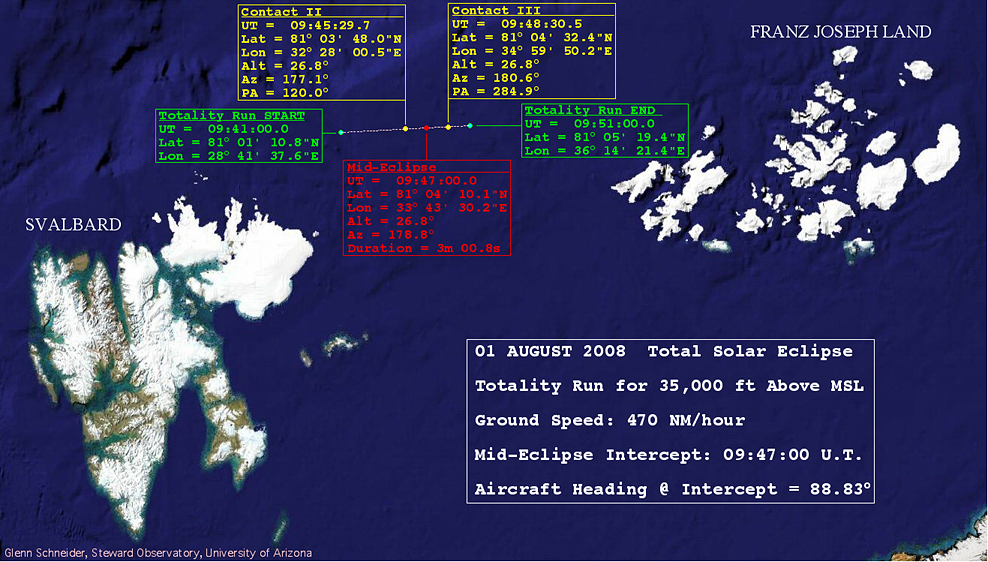
Figure 3. The 9-minute duration "Totality Run" (dotted line) beginning 6 minutes before, and ending 3 minutes after mid-eclipse intercept, with the aircraft located concentrically within the Moon's umbral shadow, instantaneously, at 09:47:00 UT (red dot).
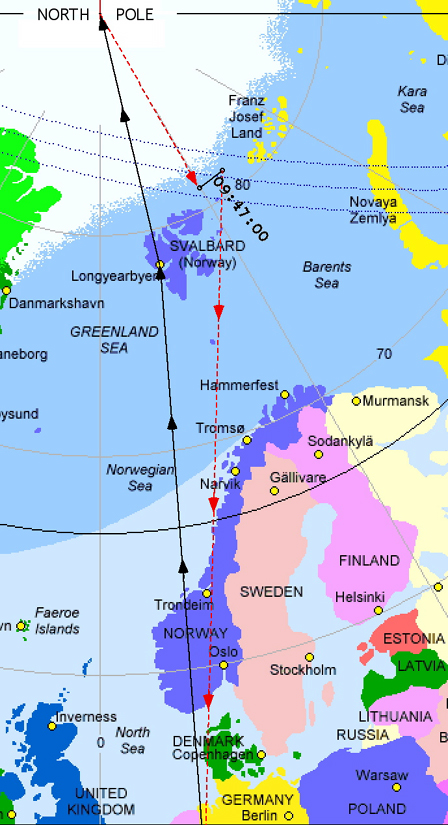
No change in aircraft heading (orientation) or altitude would be planned once the Totality Run begins. The aircraft will turn onto the Totality Run track sufficiently far ahead (in time) of second contact to allow observers to acquire the Sun in photographic equipment, and watch the last part of the partial eclipse ingress while the Sun appears as a thin crescent. Here, the completion of the heading re-alignment maneuver is planned to place the aircraft at the Totality Run "Start point" 6 minutes before mid-eclipse (appx 4m 22s minutes before second contact). The aircraft will remain on this heading for (at least) 3 minutes after mid-eclipse (i.e., appx 1m 38s after third contact {or longer at pilot's discretion}), before turning the aircraft for onto the return leg to the launch point.
Hence, the Totality Run will be a minimum of 9 minutes in duration, with the aircraft covering a ground track distance of 82.75 statute miles {with a "no wind" condition}.
After the completion of the totality run the aircraft will then return to Dusseldorf with the further opportunity for discretionary sightseeing over the east coast of Svalbard en route.
THE BASELINE
"TOTALITY RUN" - POSITION AND CIRCUMSTANCES
The baseline Totality Run has a Universal Time of mid-eclipse intercept (when the aircraft is centrally located in the Moon's umbral shadow) of 09h 47m. Presuming a flight altitude of 35,000 ft (though higher flight altitudes are under consideration), this corresponds to a location for the instant of mid-eclipse intercept of Longitude = 33° 43.504'E, Latitude = 81° 04.167'N. This is between the northeast coast of Svalbard and the west coast of Franz Joseph Land as shown in Figure 3. With a nominal ground speed of 470 NM/hr the aircraft heading (with a "no wind" condition), for this specific intercept, the aircraft heading for the totality run is 88.83° and will give rise to a totality with a duration of 3m 00.8s with the Sun 26.8 degrees above the horizon.

Figure 3. The 9-minute duration "Totality Run" (dotted line) beginning 6 minutes before, and ending 3 minutes after mid-eclipse intercept, with the aircraft located concentrically within the Moon's umbral shadow, instantaneously, at 09:47:00 UT (red dot).
FLIGHT SEGMENTS
- TIMES & DISTANCES
The time-criticality and location
of the Totality Run defines
the rest of the flight. The flight times and
distances for each of the components based upon the 09:47:00 UT
Totality
Run (Figure 4) are tabulated below (all presuming nominal ground
speeds of 470 nm/hr).

Figure 4. 09:47:00UT
Schematic
representation of the TSE2008 eclipse flight with Svalbard & North
Pole Overflights.
LATITUDE LONGITUDE Leg
Distance Time
UT
DDMM.fff DDMM.fff NautMi NautMi hours hh:mm:ss
1. KöLN LAUNCH 5117.366N 0646.007E 0.0 0.0 0.00 02:03:12 WHEELS
2. Departure Ops TBS 0.25 (estimate)
3. DUS->LYB 1633.1 1633.1 3.47
4. LONGYEARBYEN/SVALBARD 7814.250N 1524.500E 05:46:24
5. Contingency/Siteseeing 470.0 2103.1 1.00
6. LYB->N.P. 709.3 2812.4 1.51
7. NORTH POLE 9000.000N --------- 08:17:00
8. Overfly/Siteseeing 117.5 2929.9 0.25 (estimate)
9. N.P.-> T.R. Start 541.6 3471.5 1.15
10. TOTALITY RUN START 8101.180N 2842.626E 09:41:00 <-Time Critical
11. Mid-Eclipse Intercept 8104.167N 3343.504E 09:47:00 <-MID-ECLIPSE INTERCEPT
12. TOTALITY RUN END 8105.155N 3614.357E 70.5 3542.0 0.15 09:50:00 <-Time Critical
13. T.R. End->DUS 1879.2 5421.5 4.00
14. Approach Ops TBS 0.25 (estimate)
15. DUSSELDORF LANDING 5052.033N 0708.617E 14:05:00 LANDING
====== ====== ===== ========
Total 5421.2 5421.2 12.03 12h01m48s
DDMM.fff DDMM.fff NautMi NautMi hours hh:mm:ss
1. KöLN LAUNCH 5117.366N 0646.007E 0.0 0.0 0.00 02:03:12 WHEELS
2. Departure Ops TBS 0.25 (estimate)
3. DUS->LYB 1633.1 1633.1 3.47
4. LONGYEARBYEN/SVALBARD 7814.250N 1524.500E 05:46:24
5. Contingency/Siteseeing 470.0 2103.1 1.00
6. LYB->N.P. 709.3 2812.4 1.51
7. NORTH POLE 9000.000N --------- 08:17:00
8. Overfly/Siteseeing 117.5 2929.9 0.25 (estimate)
9. N.P.-> T.R. Start 541.6 3471.5 1.15
10. TOTALITY RUN START 8101.180N 2842.626E 09:41:00 <-Time Critical
11. Mid-Eclipse Intercept 8104.167N 3343.504E 09:47:00 <-MID-ECLIPSE INTERCEPT
12. TOTALITY RUN END 8105.155N 3614.357E 70.5 3542.0 0.15 09:50:00 <-Time Critical
13. T.R. End->DUS 1879.2 5421.5 4.00
14. Approach Ops TBS 0.25 (estimate)
15. DUSSELDORF LANDING 5052.033N 0708.617E 14:05:00 LANDING
====== ====== ===== ========
Total 5421.2 5421.2 12.03 12h01m48s
1. Take-off "Wheels-Up" from Köln at
02:03 U.T. This is 04:03 AM
local time in Köln,
noting daylight savings time is in effect.
2. & 14. We allocate 15 minutes (0.25 h) flight time flight time (beyond nominal cruise) for take-off (departure) and approach (arrival), operations and assuming nominal rates of climb and descent to/from cruising altitude. We do not here specifically add additional distances involved in airport departure/arrival operations (noting these TBS distances will add small increments to the above total distance estimates).
2. & 14. We allocate 15 minutes (0.25 h) flight time flight time (beyond nominal cruise) for take-off (departure) and approach (arrival), operations and assuming nominal rates of climb and descent to/from cruising altitude. We do not here specifically add additional distances involved in airport departure/arrival operations (noting these TBS distances will add small increments to the above total distance estimates).
5. We nominally plan for a pre-eclipse
flighttseeing opportunity over
Longyearbyen/Svalbard. We allocate one hour for flightseeig
at or enroute to/from a flyover of Svalbard. Primarily this build
in "contingency time", to allow for a time-critical mid-eclipse
intercept against unfavorable head winds or a modest take-off delay
which would not require permuting the order of flight segments as
defined above. This "contingency time" can be reapportioned
elsewhere (such as the North Pole overflight) if no delays are
encountered.
8. Similar to (5), but we specifically "break out", nominally, 15 minutes for overflying the North Pole. This is adjustable and should be considered in sum with (5) as pre-eclipse contingency time.
Note: Our LTU A330-200 aircraft is based in Dusdseldorf. Due to local noise abatement regulations, take-off is precluded in the early morning hours, so our flight will launch from the Köln airport (about 30 km away), but will return to Dusseldorf after the eclipse.
8. Similar to (5), but we specifically "break out", nominally, 15 minutes for overflying the North Pole. This is adjustable and should be considered in sum with (5) as pre-eclipse contingency time.
Note: Our LTU A330-200 aircraft is based in Dusdseldorf. Due to local noise abatement regulations, take-off is precluded in the early morning hours, so our flight will launch from the Köln airport (about 30 km away), but will return to Dusseldorf after the eclipse.
INTERESTED?
-- Contact: GLENN SCHNEIDER
at gschneider@mac.com
[if you are interested, or even think you may be, please don't hesitate to email!]
[if you are interested, or even think you may be, please don't hesitate to email!]